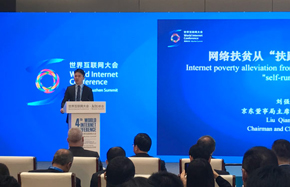Common dream of a better Asian future
Asia is a vibrant continent with unique features within the world's political and economic landscape, embracing different civilizations, varying types of institutions and a wide range of development paths. China as a member of the Asian family always insists on putting its own progress within the broader picture of the common development of Asia.
Asia as a whole has maintained peace and stability and sustained economic growth over the first decade of the 21st century, having emerged as the world's most rapidly growing region. China's rise and Asia's rejuvenation are inseparable, and the Chinese Dream and the dreams of other Asian countries illuminate each other and constitute positive interaction. Rooted in the soil of regional peace and stability this interaction can grow and thrive.
The realization of the Chinese Dream is conducive to facilitating the rejuvenation of Asia, as China's robust economic growth has injected strong vigor into Asia's development. Statistics show that China's imports from other Asian countries reached $1.03 trillion in 2012, which has created lots of jobs in these countries. As the world's largest holder of foreign exchange reserves, China remains a major market player and source of investment for many Asian countries. And as Chinese companies are encouraged to go global, Asian countries are popular destinations for Chinese businesses looking to expand overseas. As China advances its national strategies of urbanization, expands domestic demand and continues economic restructuring, these will also stimulate economic growth throughout Asia.
The existing cooperative mechanisms between China and other Asian countries have provided impetus for Asian regional integration and paved the way for Asian rejuvenation.
The trade ties between China and the Association of Southeast Asian Nations have entered a new stage with the establishment of the China-ASEAN free trade area in 2010, and ASEAN and six other dialogue partners, including China, have already launched detailed negotiations aimed at concluding the Regional Comprehensive Economic Partnership by the end of 2015.
China has also taken the lead in participating and increasing investment in the Greater Mekong Subregion Economic Cooperation Program, which helps boost subregional economic cooperation in sectors such as agriculture, human resource development, investment and trade facilitation.
Meanwhile, China, Japan and South Korea are gradually moving ahead with talks on their free trade zone. And the steps would be faster and smoother if not for Japan's right-wing politics.





















